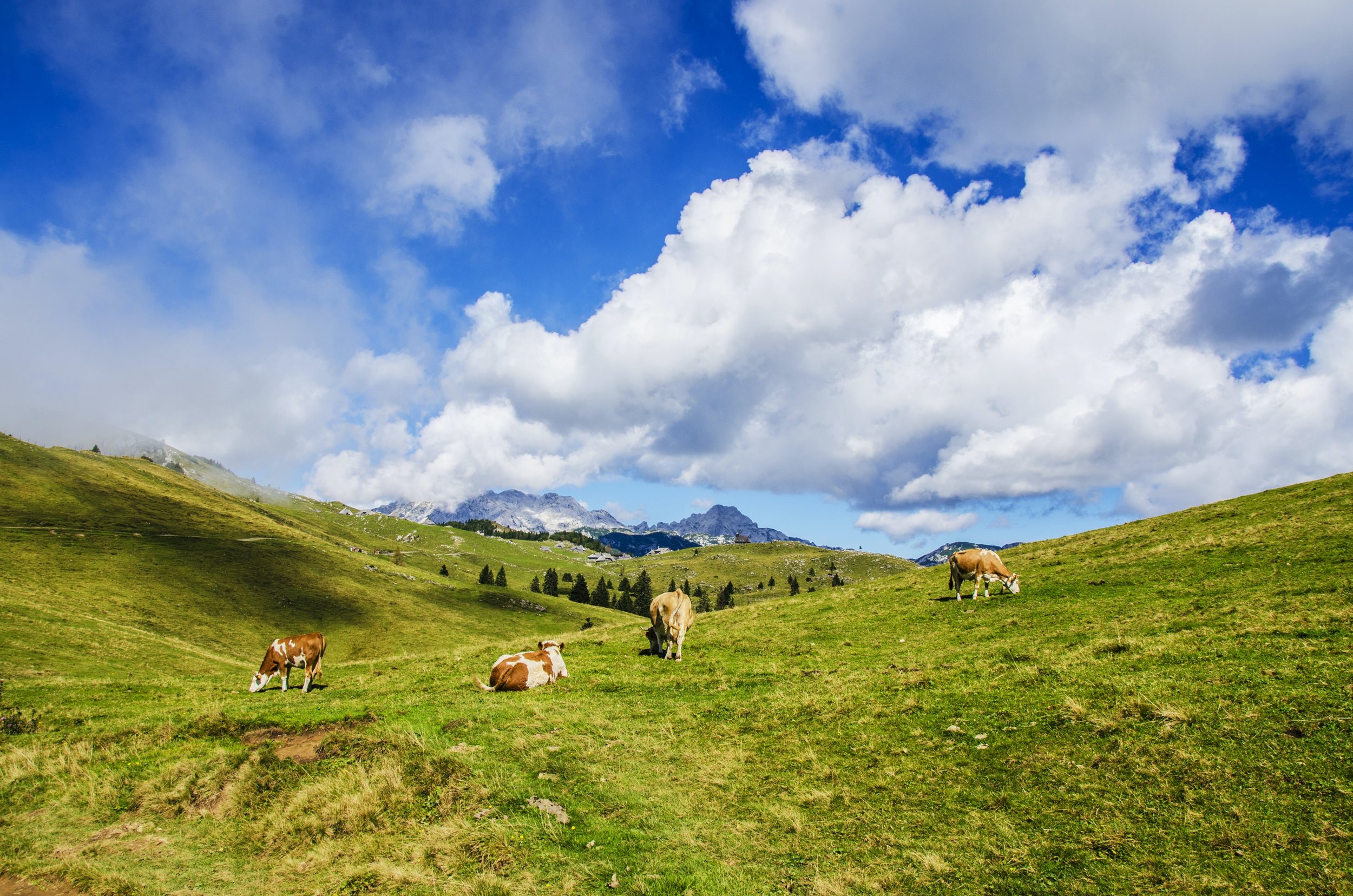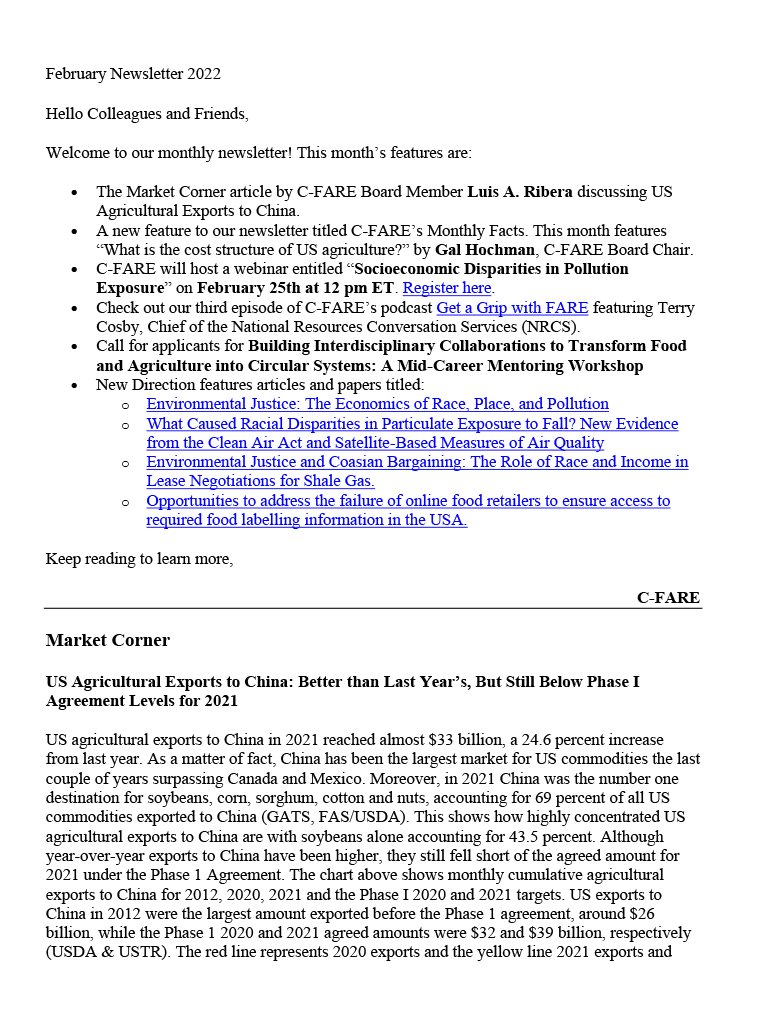The Complicated Nature of Today’s Inflation
The December C-FARE webinar focuses on the complexities of the inflationary period the U.S. is facing. Matthew MacLachlan, Michael Adjemian, and David Ortega will present an overview of their work on inflation as it relates to agriculture, food, and natural resources.
The Prevalence of Food Insecurity Across the U.S.
Food insecurity implies difficulty getting enough food at some time during the year. The causes are multifactorial and often include poverty, unemployment, low income, lack of affordable housing, chronic health conditions or lack of access to healthcare, and systemic racism and racial discrimination.
Pollution Mitigation Practices in Agriculture: Incentives, Practices, and Policies
Agriculture provides food for humans, fiber, and livelihoods for billions of people worldwide and is a critical resource for sustainable development in many regions. Regardless, agriculture also provides many ecosystem services and opportunities for climate change mitigation and removal of greenhouse gases (GHG).
Building the Capacity to Invest in Rural Prosperity through Cross-sector Collaboration
To effectively leverage their assets for long-term, shared prosperity, rural communities need a robust local capacity with solid connections at the regional, state, and federal levels.
Building the Capacity to Invest in Rural Prosperity Part II: Diving Deeper into the Development of Rural Capacity and Connectivity
To effectively leverage their assets for long-term, shared prosperity, rural communities need a robust local capacity with solid connections at the regional, state, and federal levels.
Building the Capacity to Invest in Rural Prosperity
While rural America is in no way a monolith, many rural communities have in recent years been confronted by challenging economic, demographic, and climatic trends that have limited their ability to achieve durable, inclusive economic prosperity.
Brandt Forum 2022-23: Agricultural and Environmental Science-Based Policy
Today's event forum will focus on agriculture's social and policy implications and environmental science-based policy. While economists recommend using market incentives, policymakers often use regulation to achieve agricultural and environmental resource management objectives
Carbon Sequestration and Agriculture: Incentives, Practices, and Policies
Agriculture is unique among most sectors in the economy, as agriculture's mitigation potential from both an enhancement of removals of greenhouse gases (GHG) and reduction of emissions through management of land is significant. Agriculture provides food for humans, fiber, livelihoods for billions of people worldwide and is a critical resource for sustainable development in many regions.
Socioeconomic Disparities in Pollution Exposure — New Evidence and Arising Issues
In January 2021, President Biden signed an Executive Order on Tackling the Climate Crisis at Home and Abroad that outlined an ambitious agenda for reducing socioeconomic disparities in exposure to environmental pollution.
Economic and Policy Issues in Online Food Retail
Well before COVID-19 struck, industry watchers saw the importance of online grocery shopping, with many pundits predicting slow but steady growth. However, COVID-19 promoted a rather dramatic expansion of online grocery shopping. Supporting this growth was the expansion of the online grocery pilots of the Supplemental Nutrition Assistance Program (SNAP), with nearly 90% of SNAP households now having access to these pilot programs. While the widespread availability and use of online grocery shopping is a benefit to many consumers in terms of convenience and safety, online shopping platforms are curated environments.
















